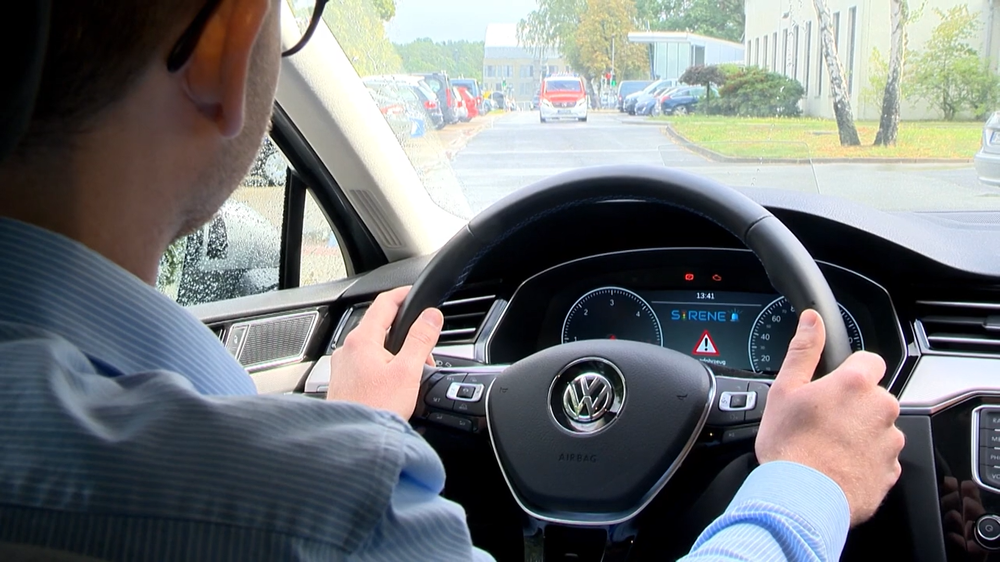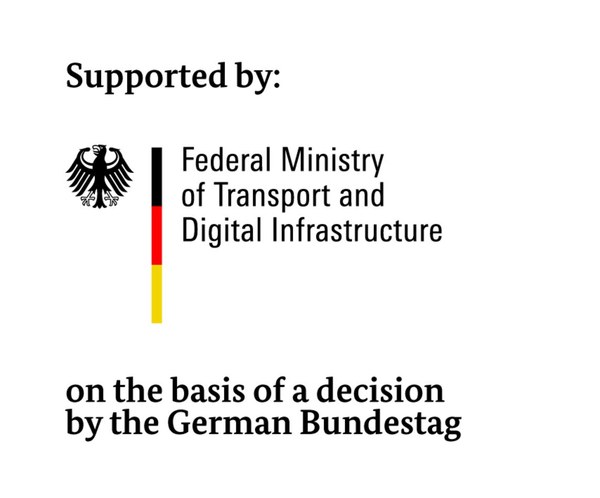Research Cooperative Systems
The department is pioneering new autonomous mobility solutions by researching, designing, and demonstrating connection, automation, cooperation, and coordination for vehicles, system networks, and us humans.
In urban areas, heavy traffic and roadworks prevent safety and emergency services from getting through quickly. In addition, red traffic lights and cross traffic at junctions are an additional source of danger. It is also extremely difficult to form a rescue lane in stationary traffic. This is precisely where the project "Optimised route guidance for special emergency services with the aid of traffic forecasts, cooperative infrastructure and traffic control" - SIRENE for short - comes in. The aim of SIRENE is to develop digital solutions so that emergency services can reach their destination more safely and quickly in future. To this end, a navigation system optimised for emergency vehicles is to be developed that also incorporates short-term traffic changes into route planning. In addition to optimised routing, the project team is also developing solutions to give priority to emergency vehicles along green waves.
With the help of traffic situation recording, processing, forecasting and control technologies, existing data is analysed and new information collected. The inclusion of historical mobility data as well as current traffic situations should enable the prediction of optimal routing. Furthermore, it is being examined whether the networking of emergency vehicles with road traffic technology and control centres can be used to give priority to emergency vehicles at selected traffic lights - including green waves.
DLR operates the Application Platform for Intelligent Mobility (AIM) along the Braunschweig city centre ring road. It is part of the Test Bed Lower Saxony and comprises a total of 36 traffic light junctions with the latest communication technology. AIM provides the perfect platform for SIRENE to test and further develop the technologies in urban traffic. The scientists at the DLR Institute of Transportation Systems are adapting the traffic light systems to give priority to the emergency services so that they can cross intersections quickly and safely when the light turns green.

SIRENE research project: The digital blue light
Your consent to the storage of data ('cookies') is required for the playback of this video on Youtube.com. You can view and change your current data storage settings at any time under privacy.
Stadt Braunschweig
Project title and -website:
SIRENE - Optimised route guidance for special forces with the aid of traffic forecasts, cooperative infrastructure and traffic control
Duration:
09/2017 to 08/2020
Project volume:
€ 2.57 million (78% funding share by the BMVI as part of the mFund)
Contracting authority:
Federal Ministry of Transport and Digital Infrastructure (BMVI)
Project participants:
Institute for Automation and Communication e.V. (ifak)
DLR Institute of Transportation Systems
AFUSOFT Kommunikationstechnik GmbH
GEVAS software GmbH
PTV Group
City of Braunschweig
Fire department Braunschweig
City of Magdeburg (associated)
Fire department of Magdeburg (associated)


